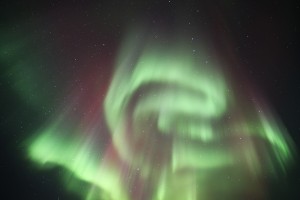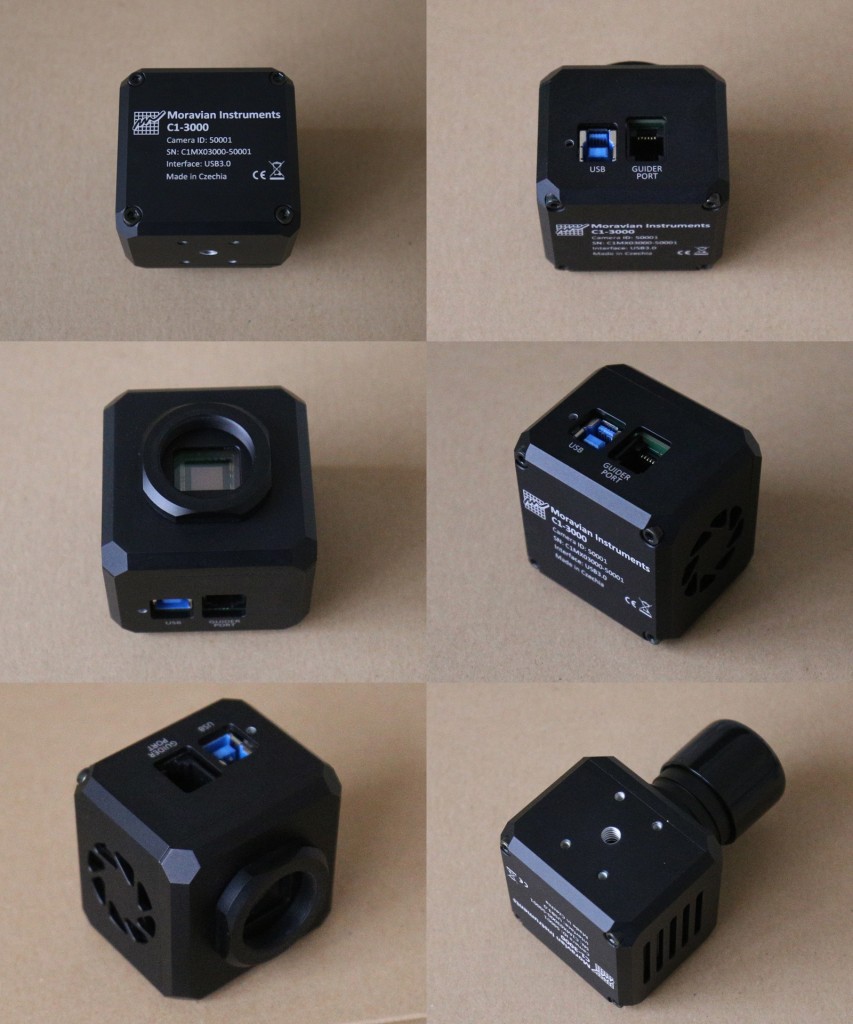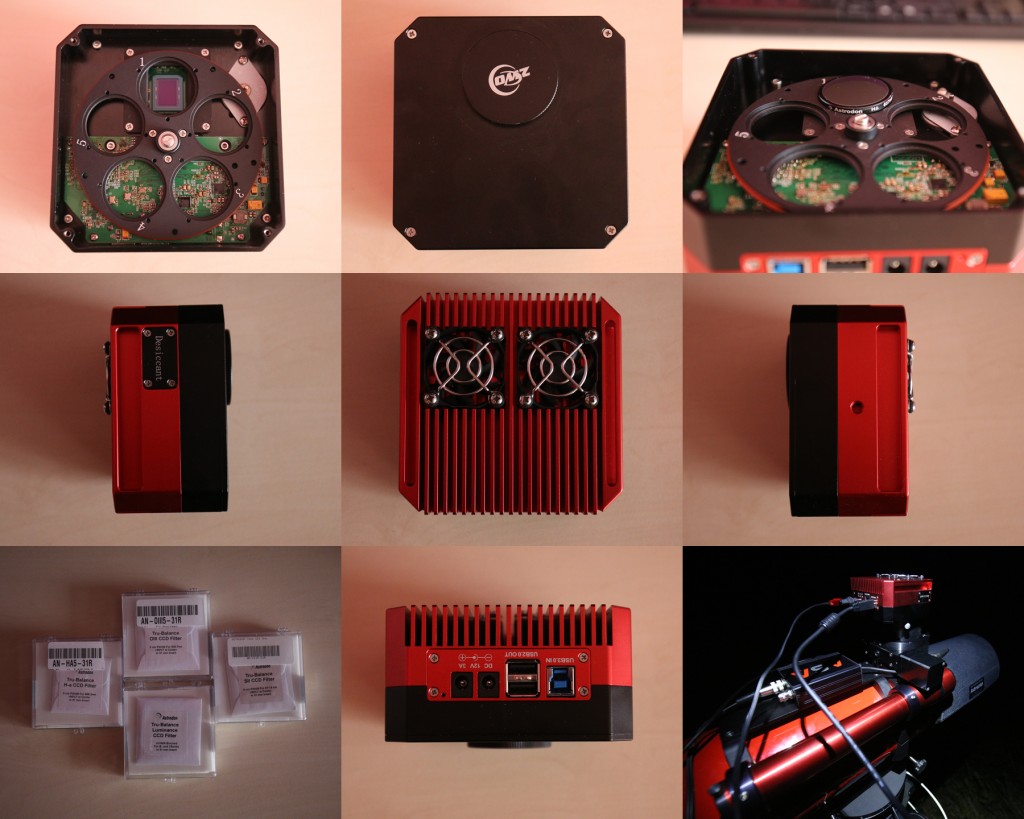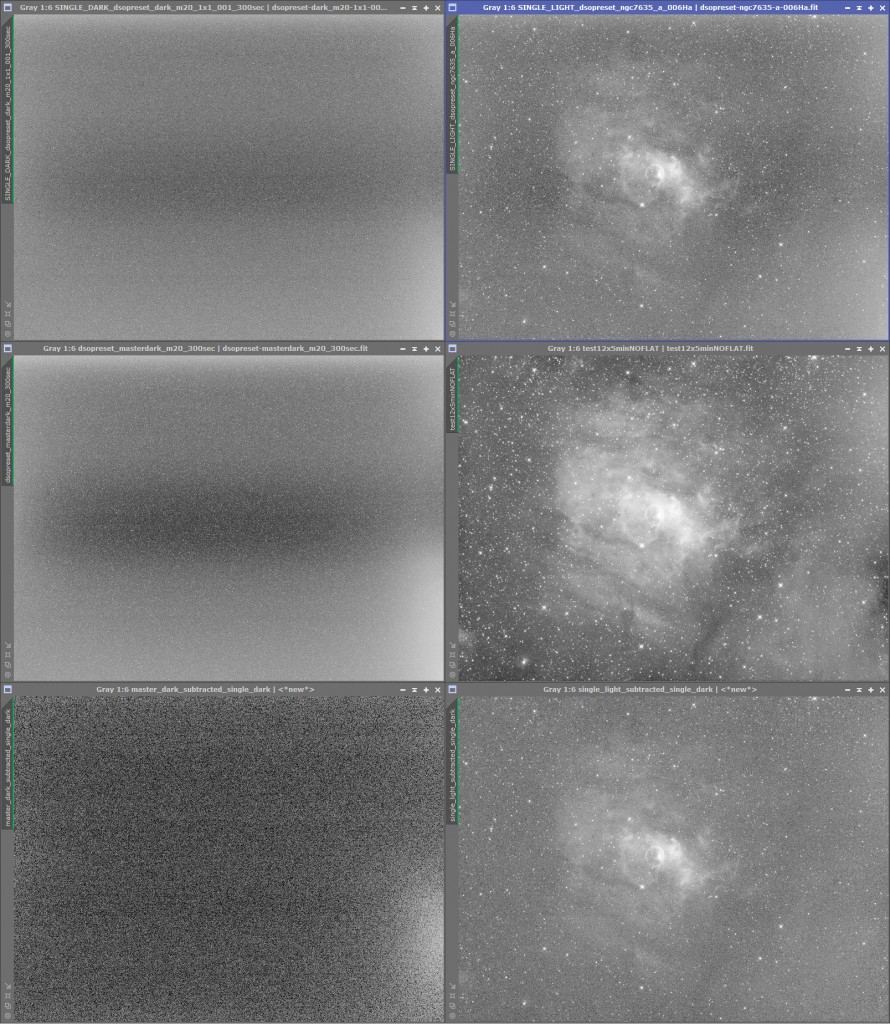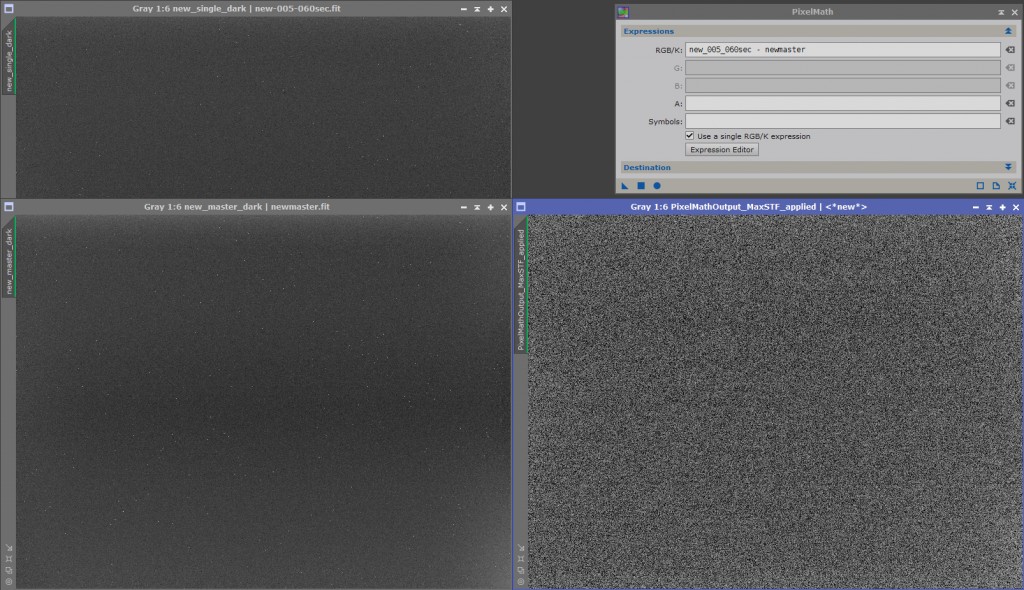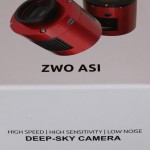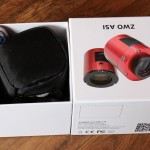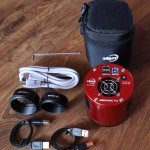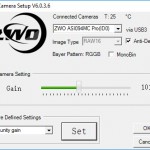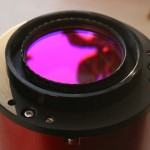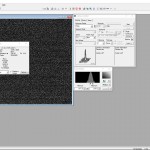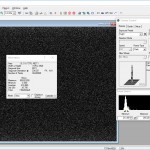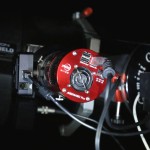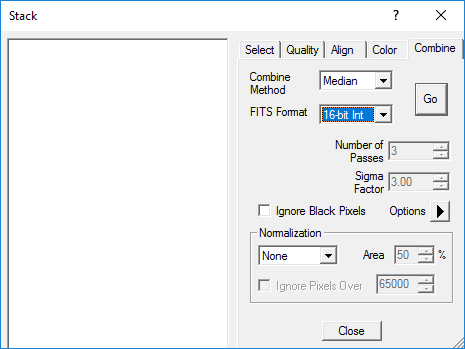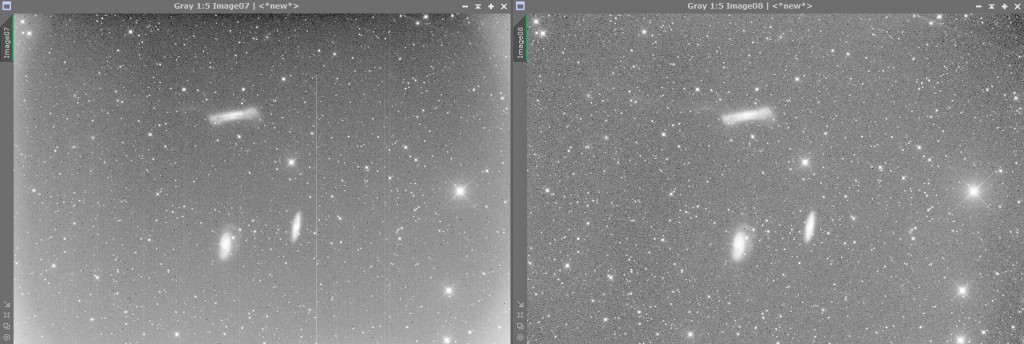Proč nemám čas? Protože když ho chvilku mám, neumím si ho zorganizovat produktivně a pak, taky, neumím říct ne. Chtěl jsem léta napsat článek o tom, jak těžké je to být astrofotič, ale být rodič a mít dítě je úplně jiná liga. Všimněte si, že žádná žena s malým dítětem neprovozuje koníček, který vyžaduje být v noci venku na louce s dalekohledem.
Aktuálně vstávám tak na 10-15 minut jednou, maximálně dvakrát přes noc. Ve 2, ve 3, nebo ve 4 ráno a pak za 3 až 4 hodiny. Typicky mě vzbudí miminko (teď má 3 týdny, což už je lepší než to bylo ty první dva, kdy jsem na závěr noční seance ještě dokrmoval mlíkem ze stříkačky (a pak ten ojeb s vyvařováním a mytím propriet) – skoro si říkám, že bych se uživil i jako sestra na neonatologii, holt jednou získaná praxe se u druhého dítěte počítá). Miminko mlaská a vetšinou ještě než začne křičet hlady stihnu vylézt, umýt si ruce a jít si pro něj do postýlky, přebalím ho, umyji prdku, popřípadě namažu krémem, oblíknu, zvážím a předám ho ženě na kojení. Pak jdu zas spát a nechám to už na manželce. S prvním dítětem jsem to tak taky dělal prvních 6 týdnů, než jsem začal zas chodit do práce.
Můj starší kluk, aktuálně skoro 3 roky, už naštěstí umí sám vylézt z postele a přijde k nám, resp. ke mně do postele a to mezi 6tou a 7mou ráno. Většinou nedokáže už si lehnout a spíš mi „skáče“ či leze „po hlavě“ tak hodinu, než mě opravdu probudí. Jdu s ním na záchod, vyčistím mu zuby, převlíknu ho z pyžama do domácího, umeju sebe (on už je velkej a umí počkat a „pohrát si“ sám v pokojíku) a jdu dělat snídani. Když kluk nezlobí, což je po ránu hodně časté, pustím mu za odměnu D-čko. To mi dává prostor k tomu v klidu připravit snídani a předložit mu jí. Mezitím si udělám i něco pro sebe a sednu si k němu ke stolu. Často jsme dříve jedli i z jedné misky stejnou věc, ale teď už naštěstí se umí krmit sám. Než skončí Kouzelná školka, stihnu vyndat nádobí z myčky a uklidit ho, někdy i něco zpět nandat.
V pracovní dny, když jsem doma a mám home-office, chodím na cca 9tou do práce – předám péči o dítě manželce. Dopoledne umím z domu pracovat do cca 12ti s malou, tak 10min pauzou na IT-okénko. Velkej kluk už umí přijít ke mně do pokoje a dožaduje se okénka na psaní v textovém editoru, tak ho občas nechám si psát, chvilku.
Když nejdu do práce (víkend nebo svátek, tak soboty někdy jedeme ráno do pekárny, jinak obvykle luxuju a dělám jiný úklid domácnosti, v neděli bývá buď výlet nebo návštěva). Aktuálně do práce teď měsíc nechodím, protože jsem si v práci zařídil rodičovskou dovolenou, když se mi teď narodil druhej kluk.
Dnes, například bylo dopoledne o tom si hrát se starším klukem cca hodinu v pokojíku, stavěli jsme vesnici, hrad a autodráhu a parkovali auta. Občas jsem si k tomu odskočil přebalit miminko, pochovat ho, předat na kojení atp. Vlastně dnes jsem kojil/vstával k němu ve 4 a pak kolem 8mé. V 11 jsme se starším klukem šli ven, trochu jsme zmokli, protože jsem nevzal deštník, ale spadlo jen pár kapek. Původně chtěl jít na hřiště na skluzavky, ale to bylo moc daleko a na písek za mokra taky není dobrý nápad jít si hrát. Tudíž jsme udělali jen pěší procházku necelé 3 km dlouhou. Doma jsme byli ve 12 a něco, žena žehlila a hodinu uspávala miminko, takže oběd nebyl ještě hotov, ale bylo na něj připraveno na lince. Postarala se o dítě, tak jsem šel vařit, udělal vařené brambory, okurkový salát a narychlo osmažil nějaké rybí prsty (předevčírem vařila žena) a naservíroval 3 talíře na stůl. Je prima, že starší kluk už se umí živit sám a nemusí ho člověk krmit. Jen je s ním více práce, s tím odmlouváním a jeho rozumbradováním a otázkama proč a proč a proč. Taky ho přemluvit se oblíct, svlíct, převlíct, jít spát po obědě atp. je nadlidský úkol. Usnul jsem s ním v cca 14 a ve 14:30 jsem se z pokojíčku vykradl. Miminko naštěstí spalo až do 15ti a něco, tudíž jsem měl více jak 30 minut času sám pro sebe a jak říkám „zlatou hodinku“, kdy si udělám odpolední kávu a sednu k PC (jsem závislý na Internetu, jak říká žena, že si k tomu počítači musím sednout, musím si přečíst sport – už jen monitoruji výsledky, jak kdo hrál, najít si čas sám jít na sportovní utkání je nemyslitelné, loni jsem byl na hokeji 1x, předloni ani jednou a letos taky ještě ne – zato jsem byl jednou letos na fotbale). Tady čas letí rychlostí světla a než si obligátně přečtu co mě zajímá, mám konec „pauzy“. Když se zadaří, že oba kluci spí, taky musím (teď na rodičovské dovolené nebo o víkendech) jít si taky na těch 30-60min lehnout, protože jinak to do večera nejde vydržet.
Když se vzbudí miminko, mám za úkol ho přebalit a umýt a očistit atp. a předat na kojení, pak si ho beru na odkrknutí a občasné pochování. Jako malej prcek docela dost spí, ještě, tak je to celkem pohoda s jedním dítětem.
Když se vzbudí starší kluk po spaní po obědě, jdu ho převlíknout do domácího oblečení (pokud ho výjimečně nenechám spát bez převlíkání do pyžama, což se občas stane, když jako rodič rezignuji na některou z mnoha položek ze seznamu, co po něm chci – protože je mi blbý mít furt jen nějaký zákazy všeho, taky mu občas musím něco dovolit, třeba spát na gauči místo v posteli, což udělal párkrát a dokonce si tam i onehdy sám šel lehnout). Pak následuje svačina. Je „po mně“, tak mu třeba udělám mango, mandarinky, jablíčko, piškoty, přesnídávku, lipánka, občas nějakou buchtu atp. dle aktuální dostupnosti co koupím nebo žena napeče.
Když je pracovní den, odpoledne, stíhám to znovu do práce na 13tou nebo 13:30, záleží na tom, zda vařím já nebo žena. Bývalo to tak 50 na 50 s výjimkou, kdy byla teď 9 měsíců těhotná a první 4 ani nechodila do kuchyně aby se nepoblinkala, takže kuchyně byla moje 100% doména. Obvykle pracuji 3-4 hodiny odpoledne. Stačí mi poctivě pracovat do práce kolem 7mi hodin denně. Proč? Protože jeden týden mám home-office a druhý týden pracuji v práci, která je v zahraničí a kam si jezdím z domova odpočinout vždy v pondělí brzy ráno a vracívám se buď čtvrtky dlouho po půlnoci (ještě chodívám v ty čtvrtky na sportovní kroužek, kde třeba běháme na závěr tréninku cca 8km, a pak ještě jdu někdy na nákup a pak jedu X hodin přes noc domů) nebo pátky večer (to ale bývají na dálnicích šílené zácpy, tak častěji jezdím zpět domů ty čtvrtky). V práci v zahraničí totiž dělám poctivých 10 hodin denně (v pondělí tedy jen 7, když přijíždím v čase oběda), bývám v práci typicky od osmi do osmi nebo od devíti do sedmi s různými přestávkami. Takže si napracuji 4-6 hodin ten týden co jsem v cizině a ten týden (vlastně jsem v ČR, kde bydlím „trvale“ 9-10 dnů ze 14ti možných a 4-5 dnů jsem v zahraničí, kde bydlím „trvale-dočasně“, se v klidu vyspím a dokonce můžu i jednou až dvakrát za těch 14 dnů třeba jít sportovat – jinak ale obvykle po nocích/večerech po práci v cizině jezdím po nákupech, abych nemusel nakupovat u nás v ČR, kde je to pro mě velký stres a o nervy a já mám rád klid a mír). Obvykle, když přijedu z práce, mám po strop narvané auto nákupů ze všech možných obchodů.
Tím, že makám víc v práci když jsem v práci, můžu víc času trávit doma s rodinou, a když mám home-office ob-týden, stačí mi pracovat i míň než 8 hodin denně, typicky kolem 7mi.
Mám veliký štěstí, že (a to poměrně často) si staršího kluka berou odpoledne na večer (16/17 až 18/19/20) děda a babi, takže buď můžu pracovat doma do práce (třeba do 18ti) nebo alespoň „nemusím“ s dítětem ven na vzduch, mě to bincání se kolem baráku, kde to všechno zná tisíckrát nazpaměť nebaví a tak raději s ním občas zajedu na krátkej výlet.
Dnes to bylo neobvyklé v tom, že ráno jsem byl venku s jedním klukem a odpoledne s druhým. Oblíknout miminko do kočárku je hračka a on pak i spí, tak se můžu projít sám na čerstvém vzduchu (škoda, že si při tom nemůžu vyřídit alespoň soukromé e-maily). Jako ano, raději bych šel na hokej, nebo si šel zaběhat, nebo si dělal svoje astronomické věci, ale s dítětem potažmo dvěma je všemu konec než trochu odrostou. Když už mi někdo dítě pohlídá, tak musím doma taky dělat jiné věci jako je údržba domácnosti (což mi pravda moc nejde, mam obě ruce levý a vše mi trvá dlouho, prostě jsem lepší softwarový inženýr, který se v životě učil 8 cizích jazyků a „umí cestovat“, než domácí kutil), ale prostě nikdy nenastane to, že bych měl doma hotovo a mohl si za odměnu dělat svoje věci. Na ty mám čas až po večerním bloku.
Večerní blok je z celého dne nejnáročnější. Mám za úkol nakrmit dítě, jít ho vykoupat (koupu každý den od jeho 1 roku věku, dříve jsme to s manželkou dělali společně). Večeře se odehrává mezi 19tou a 20tou hodinou, někdy i do půl 21, podle situace. Koupání mi zabere hodně času, protože kluk si rád hraje a tak je to vždy na 15-20 minut. Se započtením vylovení, vysušení, namazání, oblíknutí pyžámka, vyčištění zubů, přemluvení k tomu se před spaním vyčůrat aby v noci nepřiletělo počůránkový strašidlo a nepočůralo mu postýlku ta anabáze zabere klidně i hodinu. Když to klapne, spí do 21:30, spíš ale spí do 22ti, když je nejhůř, ještě ve 22:30 nespí.
Aktuálně do toho máme druhé „mimi“, takže to prozatím krásně periodicky každé 2-3-4 hodiny vyžaduje stále tu stejnou péči – přebalit, umýt, občas převlíct (když se poblinká), uklidit pleny, vyprdět, vykakat, vyčůrat, zvážit, nakojit, pochovat… jít každý týden s novorozencem k doktorce, což si nenechám ujít, samozřejmě s dětma k doktoru chodím vždy, když to jde). S malým „mimi“ to je celkem v pohodě, nabité zkušenosti z prvního se plně úročí.
Když mám tedy kolem 22hod osobní volno, konečně, musím ještě uklidit armagedon v kuchyni, nádobí do myčky, něco umýt ručně (když vařím já, tak myji průběžně a nic mi na večer nezbývá), vynést odpadky (skoro každý den a teď s miminem a plenkama určitě každý večer resp. noc), vynést tříděný odpad tak 2x týdně atp. Dříve jsme i uklízeli částečně hračky v dětském pokoji, ale dnes na to třeba já již rezignuji, leccos si dokáže ten náš krásnej, velkej, šikovnej kluk uklidit sám, případně to jen zametu ke straně…
No a pak mám volno, mohl bych jet astrofotit, stačí vyparkovat auto z garáže, vyndat dětské sedačky, naložit astro výbavu čítající tisíc položek a 150 kilogramů, hodinu a půl jet na místo, 2 hodiny to skládat dohromady, začít konečně fotit a přijdou mraky – o tom jsem vlastně chtěl psát ne? Jak těžké je astrofotit. Místo toho je tu první článek na téma jak těžké (ale krásné, mít ty malá, plyšová, voňavá miminka co člověka obejmou a pomazlí se) je být rodič.
Tomuto článku jsem věnoval 90 minut svého drahocenného času, který jsem mohl raději prospat, ale už ho chci napsat přes 2 roky, tak si teď plním jeden z dlouhodobých svých cílů. Kdy jindy, než teď, když do péče o děti alespoň nemusím teď navíc chodit do práce. Rodičovská je na plný úvazek a když člověk nechce děti zanedbávat (třeba se jich zbavit posazením před televizi), ale trochu se jim věnovat, není na nic ostatního už čas (jasně, každý „extrém“ je špatný a hledáme všichni zdraví kompromis). Jsem na jednu stranu pyšný, že umím zastat vše co ženy (kromě kojení a žehlení prádla, to fakt nedělám), na druhou stranu jsem ale bačkora, že toho, zdá se mi, dělám doma až moc (začal jsem si to sám, že dělám hodně, abych si pak mohl ospravedlnit to, že chci jet v noci fotit a nebýt celou noc doma a raději někde v noci sám s dalekohledem na louce) a že jsem „málo chlap“. Za to se trochu stydím.
![]()

